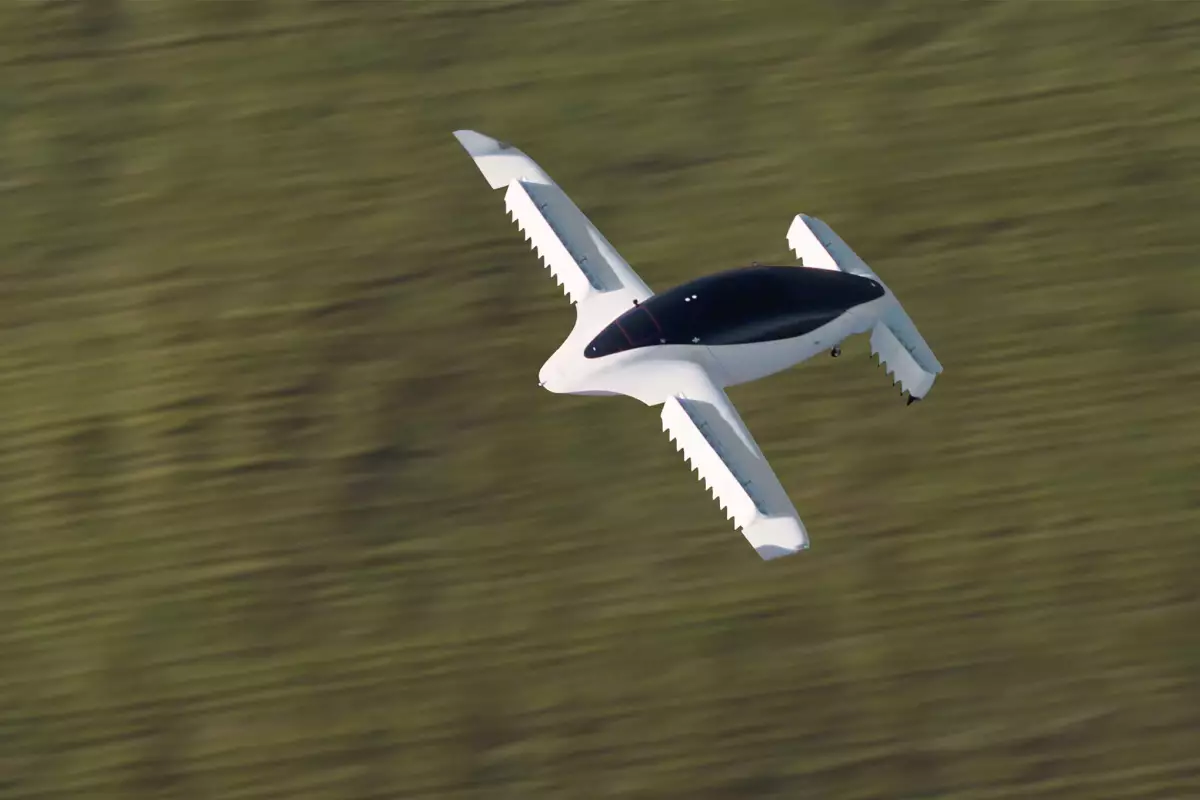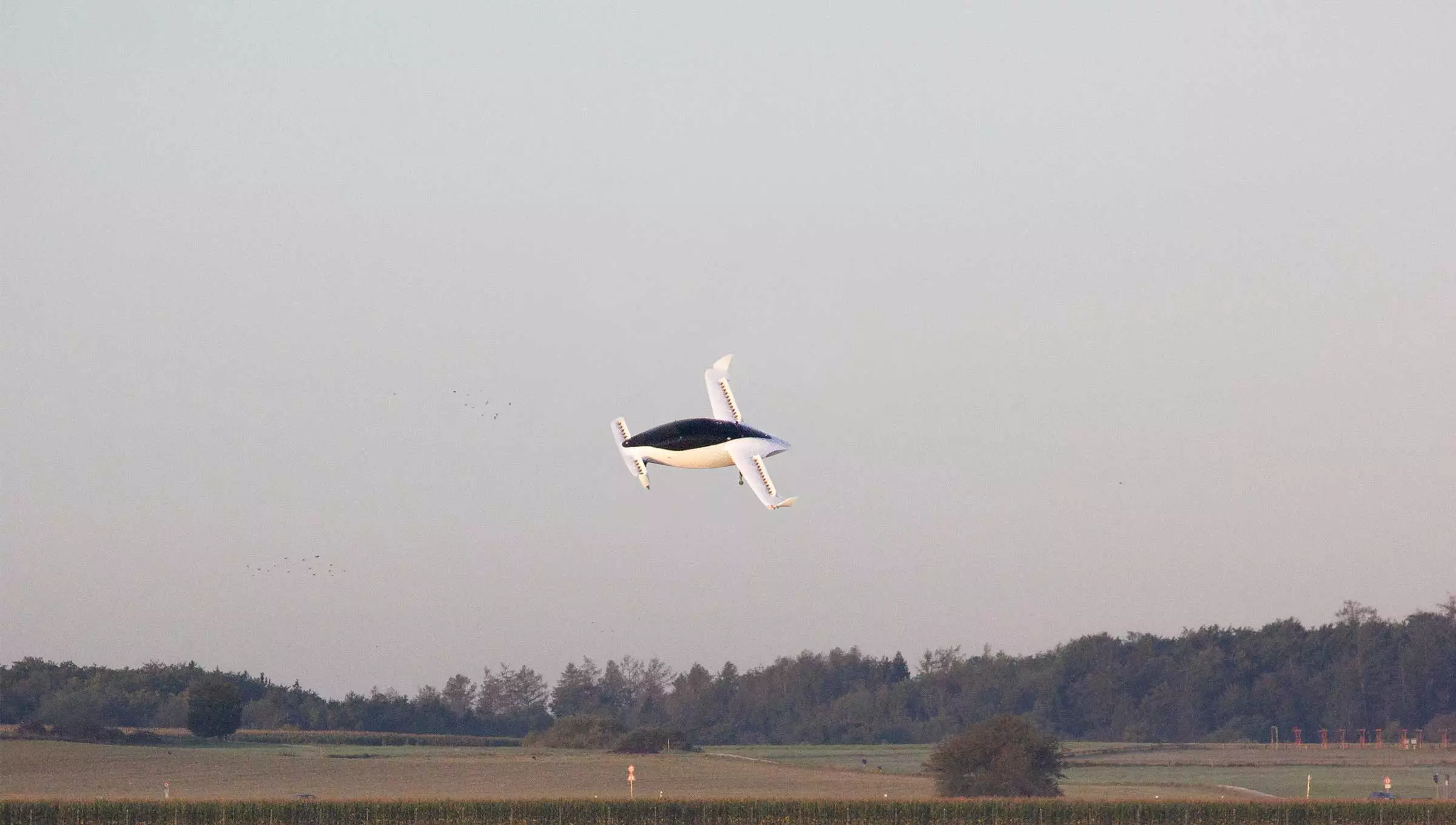Six months after revealing its five-seat electric VTOL aircraft, German startup Lilium has shown it flying at speeds over 100 km/h (62 mph), and moving between VTOL and winged flight, in a new video.
The Lilium aircraft, a super-sleek design inspired by the manta ray, is capable of transitioning between drone-style VTOL hover and efficient, long-range winged aircraft modes thanks to its four tilting banks of electric jet motors, which can face downward for liftoff, landing and hover, or tilt forward to draw air over the front and rear wings.
With 36 of these small, electric ducted fans, the Lilium has a high-pitched, jet turbine-like sound that appears to be significantly quieter than a helicopter. Its ability to transition to winged flight will give it a speed, range and efficiency advantage over other devices like the Volocopter and eHang, albeit at the cost of extra complexity.
The new video shows how the tilting banks deliver what looks like a fairly smooth acceleration after takeoff, and demonstrates the aircraft's ability to soar and execute banked turns before coming to a stop in a hover, and descending gently.

How long until we see services like this become active? Well, there's still one glaring problem to overcome, that being what to do in case of total catastrophic failure. If the Lilium is moving fast, it can presumably be landed like a glider in the hands of a skilled pilot. If it's high in the air and hovering, perhaps a ballistic 'chute can bring it down gently if it loses thrust. With 36 fans, there's certainly plenty of motor redundancy. But from lower heights, below about 120 feet, where a parachute won't have time to open and slow it down properly, a total failure would make the Lilium – and all other similar eVTOLs – a complete death trap.
This is one of the issues holding the technology back, the others including aviation authority certification and a broader plan to address how these aircraft will best interact with city airspace when the 3D commuting revolution begins. But there are very clever people working on all of this, and progress has already been astoundingly quick. Enjoy the video below!
Source: Lilium







